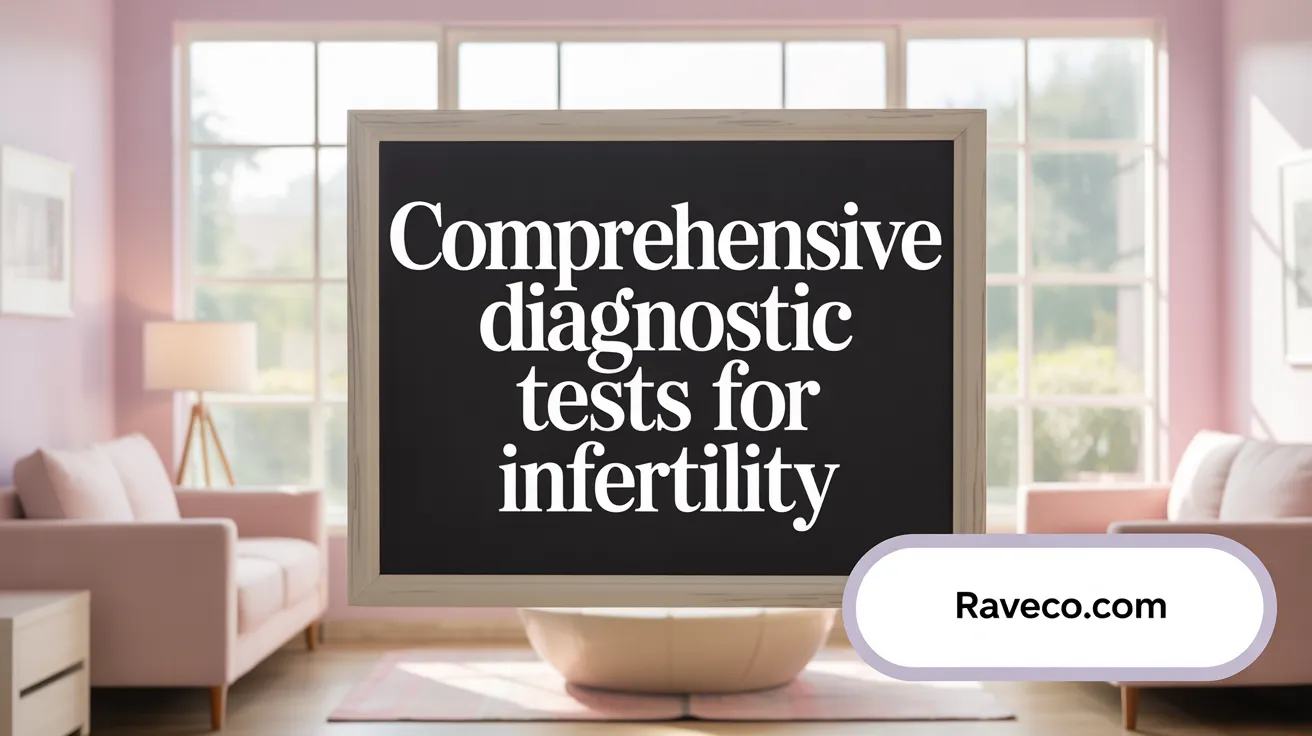Navigating Truths and Myths: Empowering Women in Birth Control Choices

Understanding Infertility and the Road to Parenthood
Infertility affects millions worldwide, touching the lives of both men and women and posing complex emotional, physical, and financial challenges. Understanding the causes, diagnostic procedures, and treatment options is essential for anyone facing this journey. This guide offers a thorough overview of infertility, exploring its causes, diagnostic approaches, a spectrum of treatments from medication to advanced assisted reproductive technologies (ART), and factors influencing success and choice. It also sheds light on recent technological advances, financial considerations, reasons for treatment discontinuation, and how to choose the best fertility care.
Causes, Symptoms, and Risk Factors of Infertility

What are the common causes, symptoms, and risk factors of infertility?
Infertility is defined as the inability to conceive after one year of regular unprotected sex, or after six months if the woman is over 35. It affects many couples worldwide, with approximately 1 in 8 women experiencing fertility challenges.
In women, typical causes include ovulatory disorders such as polycystic ovary syndrome (PCOS), which affects hormone balance and ovulation; endometriosis, which involves tissue growth outside the uterus; diminished ovarian reserve, often related to age; and uterine abnormalities like fibroids or polyps that interfere with implantation. Hormonal imbalances can also impair ovulation and conception.
Men may face infertility due to low sperm count, poor sperm motility or abnormal morphology, hormonal disorders, genetic conditions, or physical blockages in the reproductive tract. These issues hinder sperm production or transport, and can be evaluated through male fertility tests.
Symptoms related to infertility are often subtle. The main sign is difficulty conceiving. Women might notice irregular or absent periods, pelvic pain, or symptoms of hormonal imbalance. Men may experience signs like reduced sexual desire, erectile dysfunction, or issues with ejaculation.
Several risk factors impact fertility, such as advanced age—particularly for women over 35—unhealthy weight (either obesity or being underweight), smoking, excessive alcohol or drug consumption, exposure to environmental toxins, infections, and previous pelvic or reproductive surgeries.
Lifestyle choices and environmental exposures significantly influence reproductive health. Maintaining a healthy lifestyle, avoiding toxins, and early diagnosis are crucial steps to address potential issues and improve chances of conception. For comprehensive fertility testing and counseling, see Infertility testing and diagnosis.
Diagnostic Procedures and Testing in Infertility

Diagnosing infertility involves a comprehensive set of tests tailored to evaluate both male and female reproductive health. For men, initial assessments often include semen analysis, which examines sperm count, motility (movement), and morphology (shape). This test provides crucial information about sperm quality and transport issues. Hormonal testing for men is also used to measure levels of testosterone and other hormones like FSH and LH, which regulate sperm production and libido. In some cases, genetic testing may be employed to identify inherited conditions affecting fertility, especially if there are concerns about genetic disorders. Additional diagnostic procedures include testicular biopsy, which can detect blockages or defects in sperm production, and imaging studies for male infertility such as ultrasound for reproductive health and MRI for pituitary tumors. Scrotal ultrasound visualizes the testes and surrounding structures, helping identify varicoceles or tumors, while MRI can investigate more complex hormonal or anatomical issues.
For women, fertility assessment begins with blood tests that measure hormone levels such as progesterone, estradiol, TSH, prolactin, and anti-Müllerian hormone (AMH), which indicates ovarian reserve. Ovarian reserve testing through ultrasound—specifically antral follicle count (AFC)—helps evaluate the remaining egg supply. Imaging techniques are vital in visualizing reproductive organs: transvaginal ultrasound allows detailed examination of the ovaries and uterus, while hysterosalpingography (HSG) uses X-ray imaging after injecting contrast dye into the uterus and fallopian tubes to detect blockages or abnormalities. Sonohysterogram (saline infusion sonography) involves injecting saline into the uterine cavity during ultrasound to identify intrauterine abnormalities. Hysteroscopy permits direct visualization of the uterine interior with a thin, lighted scope, which is useful for diagnosing and treating conditions like polyps or fibroids. When necessary, laparoscopy—a minimally invasive surgical procedure—provides a direct view of pelvic structures, crucial for diagnosing endometriosis or pelvic adhesions.
Unexplained infertility poses challenges, as all standard tests return normal results despite inability to conceive. In such cases, understanding the limitations of testing helps guide subsequent infertility treatment options, which may include empirical medication or assisted reproductive techniques. This multi-faceted approach ensures a thorough assessment, improving the likelihood of identifying treatable factors and choosing appropriate therapies.
Exploring Treatment Options: Medical, Surgical, and Assisted Reproductive Technologies

Infertility treatment encompasses a range of medical, surgical, and assisted reproductive options, tailored to address the underlying causes of infertility.
Medical therapies form the initial approach for many couples. These include ovulation induction using drugs such as clomifene citrate, tamoxifen, and gonadotropins to stimulate ovulation. For women with polycystic ovary syndrome (PCOS), medications like metformin may improve ovulatory function. Hormonal regulators are also used to optimize reproductive hormone levels.
Surgical interventions are employed when structural issues are identified. Procedures like repairing or unblocking fallopian tubes can restore fertility in women. Removing fibroids or ovarian cysts, treating endometriosis laparoscopically, and ovarian drilling for resistant PCOS are common surgeries. For male infertility involving obstructed sperm pathways, procedures such as correcting epididymal blockages or sperm retrieval techniques are available. These surgeries aim to remove physical impediments to conception and can significantly enhance natural or assisted fertility.
Assisted reproductive technologies (ART) are crucial when medical or surgical treatments are insufficient. Intrauterine insemination (IUI) involves placing processed sperm directly into the uterus during ovulation, often alongside medications to induce ovulation. This minimally invasive technique is suitable for various infertility issues, including mild male factor and unexplained infertility.
In vitro fertilization (IVF) is a more advanced ART method. It involves ovarian stimulation to produce multiple eggs, retrieval of eggs, fertilization with sperm in the laboratory (often with ICSI if male infertility factors are present), and transferring the resulting embryos into the uterus. IVF success rates improve with high-quality embryos and optimal timing.
Third-party reproduction options expand family-building possibilities. Donor sperm, donor eggs, embryo donation, and gestational surrogacy are options for individuals facing severe infertility or personal preference for genetic traits. These techniques help overcome genetic, structural, or medical challenges that prevent natural conception.
All these treatments involve specific benefits and risks. For example, ART procedures may carry the risk of multiple pregnancies, ovarian hyperstimulation syndrome, or surgical complications. Therefore, a personalized treatment plan designed by fertility specialists is essential. Such plans consider individual health, age, diagnosis, and personal circumstances to maximize success and minimize risks.
In conclusion, infertility treatments are diverse and continuously evolving, requiring careful assessment and tailored strategies. Consulting with qualified fertility professionals ensures the most appropriate options are chosen to help couples achieve their family-building goals.
Choosing the Right Treatment and Understanding Success Rates

What factors should be considered when choosing an infertility treatment?
Selecting an appropriate infertility treatment requires a careful assessment of several factors. These include identifying the specific cause of infertility, which may involve hormonal tests, ultrasounds, and semen analysis. Patient age and reproductive history are critical, as success rates tend to decline with age, especially after 35 (Infertility Evaluation and Treatment). Lifestyle factors such as smoking, obesity, and stress levels also influence outcomes.
Financial considerations are essential—treatment costs, insurance coverage, and available funding can affect choices (Ultimate Guide to Fertility Treatment Costs). Emotional readiness and personal values regarding options like donor gametes, surrogacy, or adoption influence decision-making further (Family-Building Options).
A detailed diagnosis by a fertility specialist helps develop an individualized plan tailored to the patient’s family-building goals, health status, and circumstances (How to Choose a Fertility Specialist). This comprehensive approach ensures that the chosen therapy aligns with medical, emotional, and financial needs.
What are the success rates and effectiveness of different infertility treatments, particularly ART and IVF?
Success rates for infertility therapies vary depending on numerous factors, notably age, diagnosis, and treatment type. Assisted reproductive technology (ART), especially in vitro fertilization (IVF), shows an average success rate of roughly 20% to 40% per cycle in the U.S. for women under 35, with rates higher when donor eggs are used (IVF Success Rates by Age).
Recent data from the CDC indicate that in 2023, over 95,860 babies were born via IVF in the US, with the majority of births being singleton (around 97%), ensuring both safety and effectiveness (US IVF Usage Increases in 2023).
Tools like the IVF Success Estimator analyze clinic data to provide personalized success probabilities, incorporating factors such as age, ovarian reserve (AMH levels), and previous treatments. These estimates help set realistic expectations.
While a single cycle offers a certain chance of success, multiple cycles tend to improve overall outcomes (Success Rates After Multiple Treatment Cycles). Careful management, choosing reputable clinics, and personalized protocols optimize the likelihood of pregnancy (Choosing a Fertility Clinic).
In summary, treatment success increases with younger age, comprehensive diagnosis, and tailored intervention plans, making personalized care and multiple attempts often necessary for achieving pregnancy.
Recent Advances and Emerging Trends in Fertility Treatments
Recent technological breakthroughs have significantly advanced the field of fertility treatments, offering new hope to individuals and couples facing reproductive challenges.
One of the most impactful innovations is vitrification, a rapid embryo and egg cryopreservation technique. Unlike earlier slow-freezing methods, vitrification prevents ice crystal formation, markedly improving the survival rates of frozen oocytes and embryos. This advancement allows for flexible timing of embryo transfer and enhances success rates.
Preimplantation genetic testing (PGT) has become a standard component of IVF procedures. By analyzing embryos for chromosomal abnormalities or genetic mutations before transfer, PGT reduces the risk of miscarriage and hereditary diseases, leading to healthier pregnancy outcomes. Additionally, the use of time-lapse embryo imaging combined with artificial intelligence (AI) algorithms enables embryologists to monitor embryo development continuously and assess quality with enhanced accuracy, increasing the likelihood of selecting the most viable embryo.
Automation technologies such as microfluidics and lab-on-a-chip systems are revolutionizing laboratory processes. These systems automate complex tasks like gamete handling, fertilization, and embryo culturing, improving lab efficiency, minimizing human error, and standardizing protocols across clinics.
Fertility preservation methods are diversifying beyond conventional egg and sperm freezing. Advances include in vitro follicle culture, which aims to mature immature eggs outside the body, and the development of bioprosthetic ovaries. These techniques are particularly beneficial for cancer patients requiring treatment prior to fertility or women wishing to delay childbearing without compromising future options.
On the horizon, stem cell research is exploring the creation of gametes from somatic cells, potentially providing new avenues for infertility treatment, especially for those with gonadal dysgenesis or age-related decline. Meanwhile, CRISPR gene editing technologies are under investigation for correcting hereditary genetic defects in gametes or early embryos, although ethical considerations remain a significant debate.
Societal trends, including delayed parenthood and the increasing recognition of diverse family structures, continue to drive innovation. As technology progresses, fertility care becomes more personalized, accessible, and ethically complex, reflecting broader societal changes and scientific possibilities.
Financial Aspects, Treatment Challenges, and Choosing a Fertility Clinic
What are the typical costs, financial considerations, insurance coverage, and financing options related to infertility treatments?
Infertility treatment expenses vary significantly depending on the procedure, location, and individual circumstances. Basic fertility drugs like clomifene may cost between $10 to $20 monthly, while injectable hormones such as gonadotropins can reach $2,500 to $3,500 per month. An average IVF cycle in the U.S. costs approximately $12,000 to $18,000, including medications, blood tests, and embryology procedures, with total costs often exceeding $30,000 if donor eggs or additional services are involved.
Insurance coverage varies widely: 22 states plus Washington, D.C., have laws requiring some level of fertility coverage, but many patients still pay out-of-pocket for treatments. Clinics often offer financing options, including through specialized loans, grants, and assistance programs, to help manage costs. Additional expenses such as embryo freezing, storage, and travel should be factored into overall financial planning.
The high costs emphasize the importance of understanding insurance benefits, exploring available financial aid, and planning for potential multiple cycles. For detailed information, see Costs of infertility treatment and Fertility treatment financing options.
What are common reasons for infertility treatment failure and dropout, and how do these impact overall success rates?
Treatment failure can result from various biological factors like diminished ovarian reserve, poor embryo quality, or procedural issues. Emotional strain, financial burdens, physical discomfort, and feelings of futility often lead to dropout. Demographic elements such as older age, lower educational levels, and limited financial support also influence the likelihood of discontinuing treatment.
Dropping out reduces the chance of achieving pregnancy; studies show that discontinuation during fertility treatment drops overall pregnancy probabilities by around 31.6% (pregnancy rates in infertility treatment dropouts). However, many who cease treatment still conceive naturally afterward, with roughly a third of dropouts' eventual pregnancies occurring post-discontinuation.
Providing adequate emotional and financial support, along with realistic expectations and counseling, can improve persistence, adherence, and success outcomes.
How can patients evaluate and select appropriate fertility clinics or specialists for infertility treatment?
Choosing a suitable fertility clinic involves thorough research of success rates, which are often published by reputable sources like the Society for Assisted Reproductive Technology (SART) and CDC. It’s essential to interpret these success rates in context, considering the clinic’s patient population and procedures.
The qualifications of the specialist matter—look for board-certified reproductive endocrinologists with extensive experience in fertility treatments (Reproductive Endocrinologists Certification). Assess the variety of available treatment options, quality of laboratory facilities, and clinic policies on inclusivity, especially for LGBTQ+ families.
Clear communication, transparency regarding costs, and care personalized to individual needs are vital. Supports like counseling services, patient education, and active participation in research also contribute to better outcomes.
Ultimately, selecting a clinic that aligns with your medical needs, values, and financial resources will foster better treatment experiences and success rates.
Moving Forward with Confidence and Knowledge
Navigating infertility can be a complex and deeply personal journey, but advances in diagnostics, treatment options, and supportive care make successful conception increasingly attainable. Understanding the root causes, undergoing comprehensive evaluation, and exploring tailored medical, surgical, and assisted reproductive technologies can empower individuals and couples. Considering lifestyle factors, financial realities, and psychosocial challenges while selecting reputable fertility clinics and specialists ensures a well-informed approach. Emerging technologies and ongoing research offer hope for even better options in the future. With accurate knowledge, compassionate care, and persistence, many can build the family they desire.





.png)